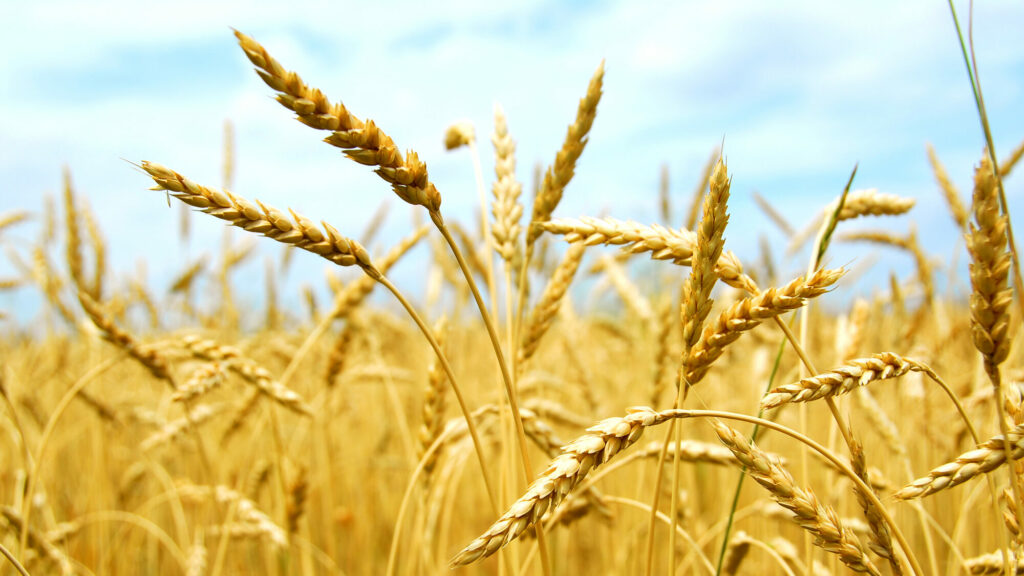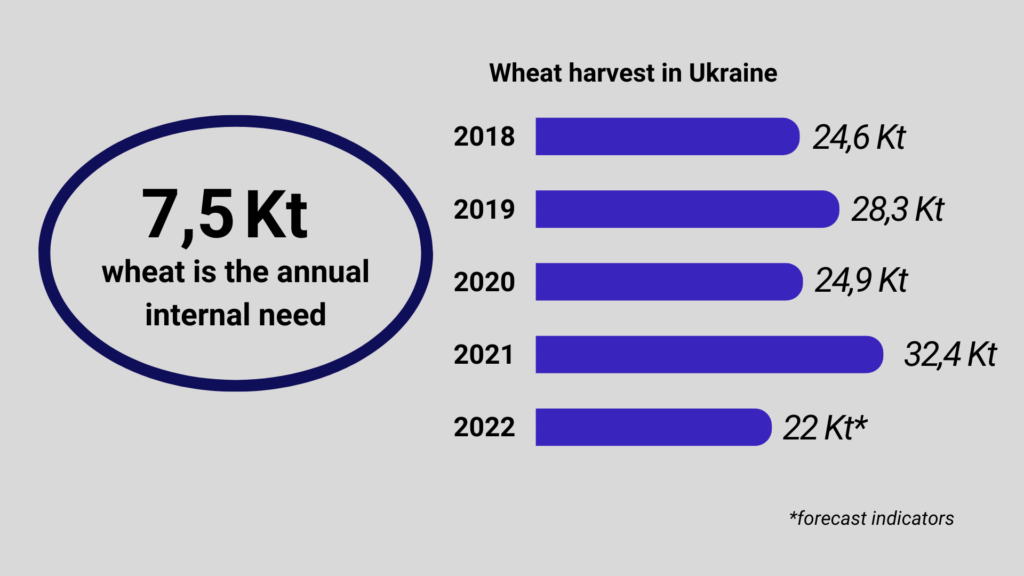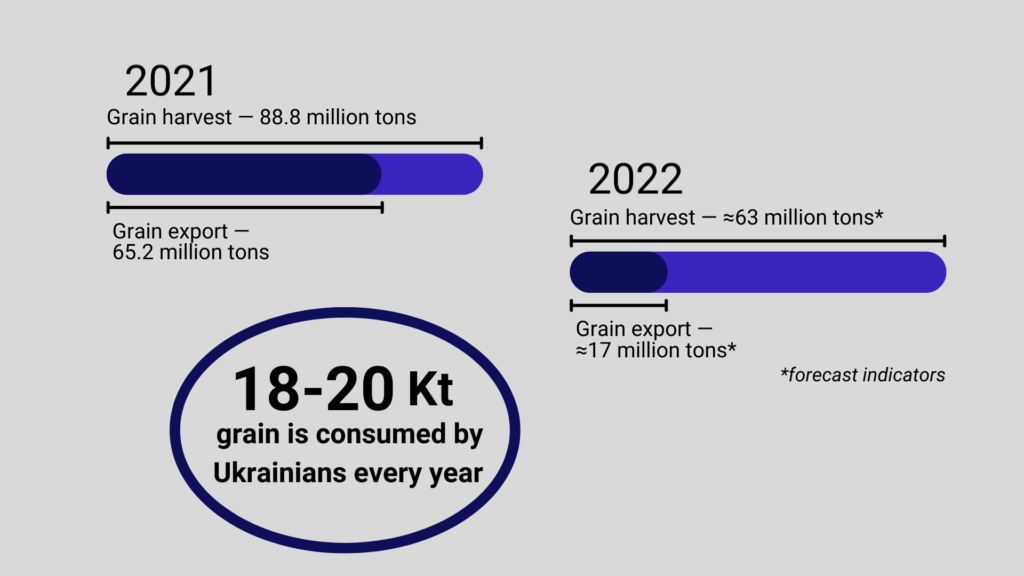Shortage of bread and other fakes about grain in Ukraine

The topic of Ukrainian grain exports, in particular after the unblocking of Ukrainian ports, causes numerous discussions. USM debunks myths and explains why there is plenty of grain and bread in Ukraine.
Fakes about the shortage of grain in Ukraine, especially as a result of exports from unblocked ports, are gaining momentum. Some actively call not to sell grain, others see “betrayal” in the sale of grain, and all together insist on the famine that will surely befall Ukraine if we do not stop the export of our grain. What is really happening?
How much bread can Ukrainians eat?
The Cabinet of Ministers of Ukraine approved the norms of consumption of bread products for one able-bodied person per year 8 years ago. So, one adult should consume 62 kg of wheat bread per year, 39 kg of rye bread, 4 kg of pasta, and 9.4 kg of wheat flour.
It is believed that children, teenagers and the disabled consume much less of such products.
Similar norms were prescribed in the nutrition norms of servicemen of the Armed Forces and other military formations.
The daily rate was calculated for one person in grams. One soldier per day should consume: 300 g of bread made from a mixture of first-grade rye and wheat flour, 350 g of first-grade wheat flour, 70 g of first-grade wheat flour, and 15 g of second-grade wheat flour.
It is these standards that allow us to calculate how much grain Ukraine needs for domestic consumption. Actually, based on these calculations, every year a special Memorandum of Understanding is signed between the Ministry of Agrarian Policy and Food of Ukraine and the participants of the grain market. Last year, this Memorandum determined the maximum volume of wheat exports at the level of 25.3 million tons. At the same time, the wheat harvest was 33 million tons (26% more than in 2020), and the domestic demand was only 7.5 million tons of wheat.
How much grain do Ukrainians produce and consume?
Experts note that already in July, Ukrainians again began to spend more money on bread. This is due to inflation and the wealth of citizens. Before the war, the trend was declining: people consumed more meat and fish products, fruits and vegetables.
Production of bread in Ukraine, like its consumption, has been declining since the 2000s. This is evidenced by the annual reports of the State Statistics Service. The reasons for such changes were various – from “shadow business”, better living standards and to new dietary preferences of people.
In January-February 2021, 122.8 thousand tons of bread and bakery products were produced in Ukraine. This is 7.4% lower than in the same period of 2020.
Ukrainian mass media report that the number of bread consumers in Ukraine has decreased by 2-3 million since the beginning of the full-scale war, and the drop in bread production in January-July was 15-20%. Such indicators were affected by forced migration of the population, hostilities and occupation. About a fifth of bread factories in Ukraine have stopped.
New harvest
In 2022, farmers managed to obtain about 52 million tons of grain crops. At the same time, about 18 million tons of grain are needed to meet the domestic needs of Ukrainians. Simple math: Citizens consume significantly less than farmers harvest and produce in total.
For example: the grain import needs of African countries this year (from July 1, 2022 to June 30, 2023) are estimated at almost 100 million tons, of which about 57 million tons are wheat.
According to data from Barva Invest, at the end of summer the wheat yield was 16.5 million tons (pre-war forecast: 28.3 million tons, -42%).

At the same time, the war provoked a shortage of grain storage capacity (which, by the way, has the property of spoiling). Previously, USM said that by mid-autumn in Ukraine, the shortage of grain storage capacity may amount to 10-15 million tons.
That is, all the grain that cannot be exported and that exceeds the needs of domestic consumption can potentially spoil. And these are huge losses both for the state and for farmers who have invested their money in growing grain.
In its turn, prices for agricultural products are very unstable, since the blockade of ports and military actions of russian federation on the territories of Ukraine destroyed the established logistics. Only after the opening of the “grain corridors” did wheat prices rise by approximately UAH 1,000. But sea export is still a risk, so many entrepreneurs prefer a more complicated, but at the same time more reliable way of transportation, for example, by road or rail to Poland.
Export: who needs it?
In the 2021/2022 marketing year (July-June), Ukraine exported 61.52 million tons of grain and oil crops.
As of the end of August, 2.98 million tons of grain were exported from Ukraine since the beginning of 2022/23. That is, 51.6% less than in the corresponding period of 2021/22 MR (6.17 million tons).
The Ministry of Agrarian Policy reports that the following were exported from Ukraine:
• wheat: 783 thousand tons, which is 73% less yrs (2021/22: 2.931 million tons)
• corn: 1.935 million tons, which is 68% more yrs (2021/22: 1.935 million tons)
• barley: 257 thousand tons, which is 8 times less yrs (2021/22: 2.070 million tons)
• rye: 0.1 thousand tons (2021/22: 5.9 thousand tons).
Such low indicators undoubtedly affect the economy. Foreign currency earnings from the export of agricultural products in the first three months of the war equaled the value of exports in one pre-war month.
Before the blockade of the ports of Greater Odessa, grain was sold in alternative ways, using road, rail and river transport. Meanwhile, the remains of last year’s harvest in Ukraine at the beginning of the year amounted to approximately 28.6 million tons.
Since August 1, it was possible to export another 2.9 million tons of grain products by sea. The Istanbul Agreement provides that the “grain corridor” will operate for another 3 months, so this indicator will grow.
Everyone will enough
Once again, “dry” numbers and calculations allow us to assure that there will be enough grain in Ukraine to meet the needs of citizens.

In 2021-2022, the internal consumption of the Republic of Moldova amounted to 19.792 million tons of cereals and grain legumes. And we are talking not only about bread, but also about animal feed, internal processing and other needs.As Olena Neroba, business development manager of the Maxigrain company, told USM, last year’s harvest was 88.788 million tons, 65.239 million tons were exported.
As you can see, the balance from exports amounted to 23.549 million tons, which covers even more than the volume of the country’s domestic needs.
This marketing year will be no exception, even with the reduced harvest. Many people went abroad, according to UN estimates, there are more than 11 million people, of whom only 4.7 million have returned. And this will directly affect the reduction of our internal needs.
As we can see, grain export is not a problem, but an indisputable achievement of Ukraine in the conditions of war, and it does not carry any treachery or reasons for panic. But spreading fake points about the threat of famine due to the export of grain is a direct “sing along” to russian propaganda. Because the destruction of the Ukrainian economy by any means is one of the enemy’s goals. And the “grain corridor” is nothing more than evidence of their defeat on the political battlefield. Therefore, loud statements without confirmation should not be taken for granted, and manipulations with invented calculations and intimidation by other “experts” should not be allowed.





